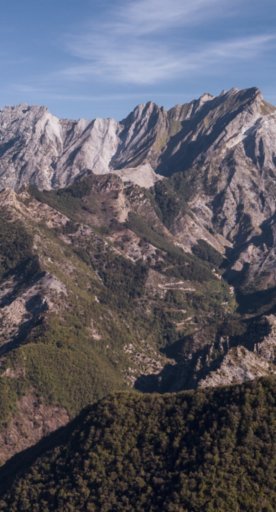

Foliage on Monte Amiata: 4 places to admire it
Itineraries among centuries-old chestnut trees, beech forests and panoramic spots
We are in southern Tuscany, embraced by in the unspoiled nature of Monte Amiata.
It is here, far away from everything, that the warm shades of fall paint the mountain with a thousand colors.
Numerous paths cross the vast chestnut groves at altitudes of up to 1,000 m and then give way to beech forests that, oblivious of the crisp air, stretch their trunks upwards to the sky, creating a rain of colorful leaves: from the bright yellow of the leaves still clinging to the branches to the red carpet that covers the paths, like in a fairy tale. Here are 4 places where you can enjoy the spectacular foliage.
-
1.The Via dell’Acqua water route: the Great Ring itinerary of the Monte Amiata springs
-
2.Monte Labbro
-
3.The Conca d'Oro
-
4.Trekking in Faeta
The Via dell’Acqua water route: the Great Ring itinerary of the Monte Amiata springs

It is the Great Ring that embraces the volcanic cone of Monte Amiata, leading you to the discovery of the Monte Amiata springs.
From the woods of Seggiano to the trails of Piancastagnaio, the springs of Castel del Piano and Santa Fiora and the majestic beech trees of Abbadia San Salvatore: 62 kilometers to walk along and complete in several stages.
Along these trails, chestnut trees alternate with beech forests and walking along them is an extraordinary way to lose yourself in the fall colors of Tuscany's ancient volcano.
Monte Labbro

The summit of Monte Labbro is easy to reach and, from there, you can discover a 360-degree view of the meadows sloping to the villages further down. Also located here, stands the limestone pyramid where David Lazzaretti founded the Giurisdavidica socio-religious community in the 19th century.
The environment is particularly delicate, so much so that it is considered a priority habitat of community interest for wild orchids, the Etruscan violet, the yellow asphodel and the delphinium fissum.
In fall, it looks like a natural terrace on the foliage of the Amiata countryside.
The Conca d'Oro

The Conca d'Oro (Golden Valley) is the name of the valley that joins Montegiovi, Seggiano and the rugged western area of Monte Amiata.
Its name comes from the excellent extra virgin olive oil produced from the Olivastra Seggianese olive cultivar and, because nature in the fall takes on a bright yellow color, it does in fact remind you of gold.
It is one of the most striking natural landscapes in the Monte Amiata area and a good place to admire this landscape is the square in Montegiovi, a hamlet in the municipality of Castel del Piano, perched on a cliff.
Trekking in Faeta

Faeta is a locality situated between Vallerona and Santa Caterina in the municipality of Roccalbegna, an area mainly characterized by fruit-bearing chestnut trees.
The leaves turn red here and admiring them is a captivating experience of deep contact with nature, especially when accompanied by a guide who can explain and tell you all about the beauty you are seeing.










































































